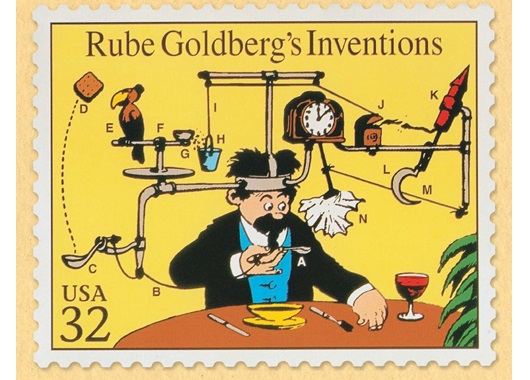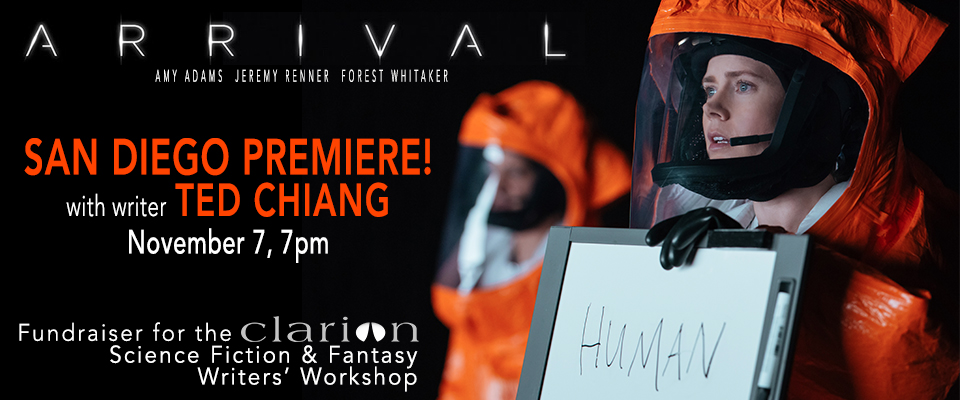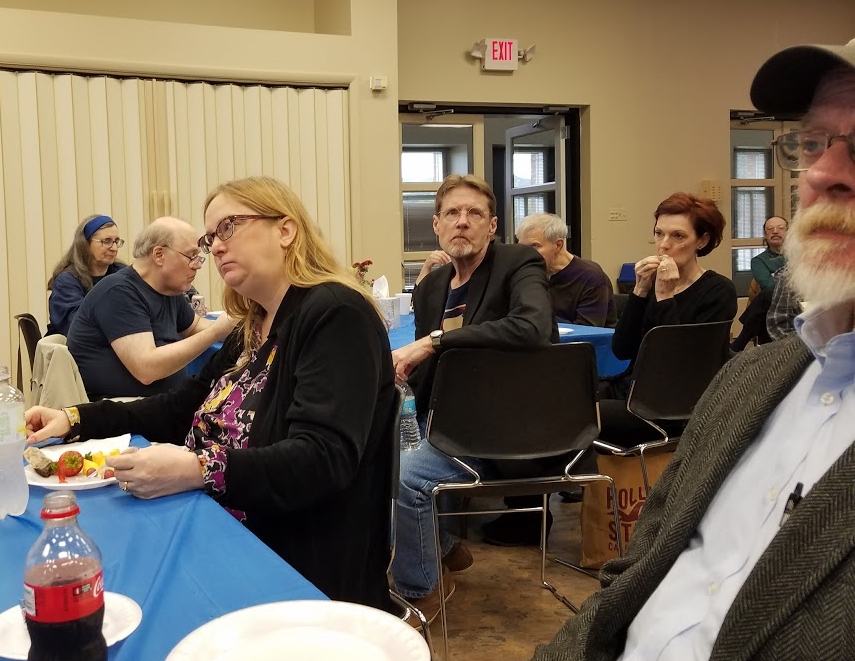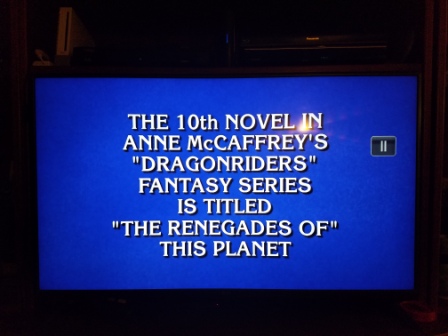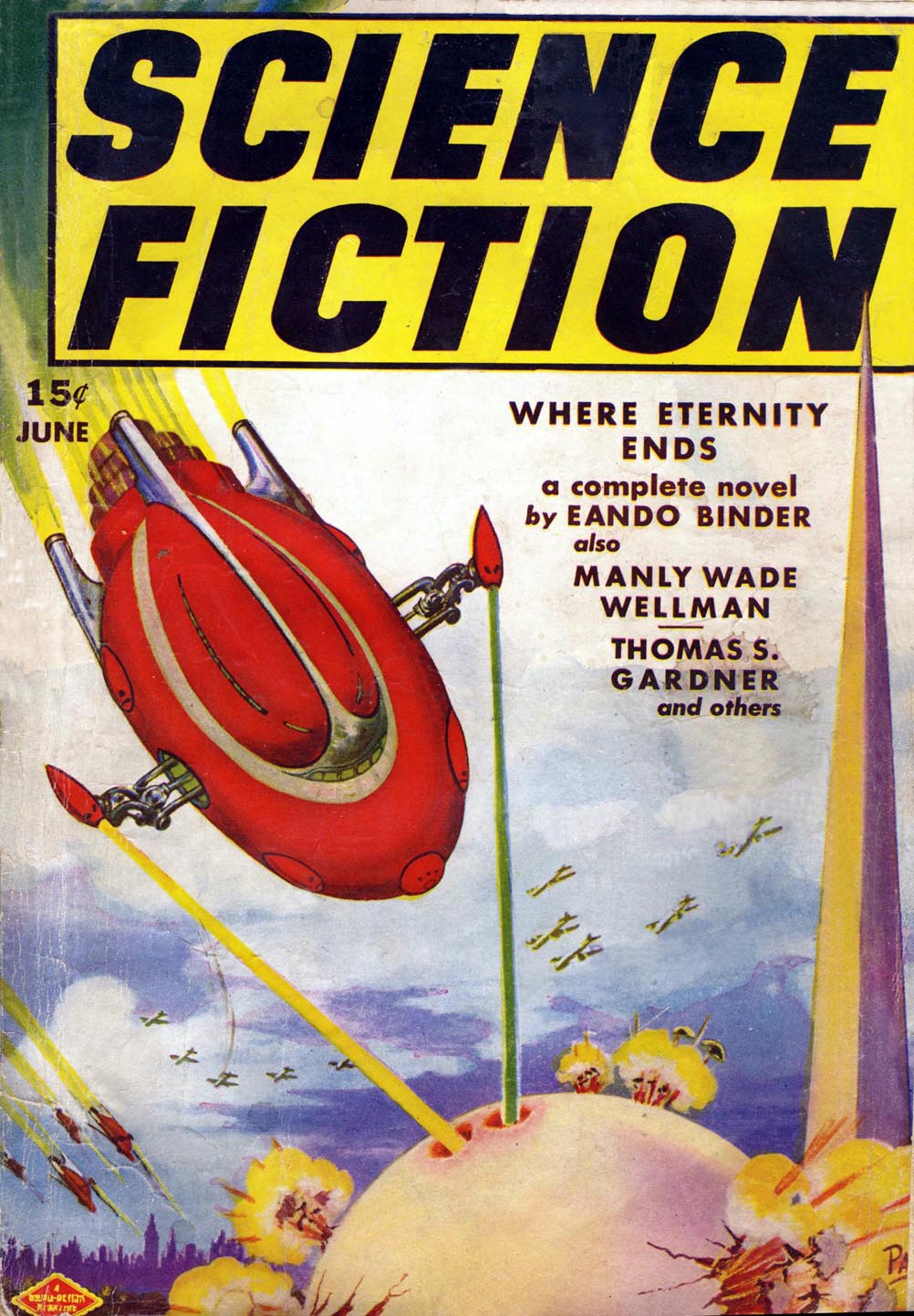(1) TWEETS OF GENIUS. The winner of the internet today begins here –
@ChuckWendig yo, can you help me out
— Sam Sykes (@SamSykesSwears) July 28, 2017
(2) NEXT CHIANG ADAPTATION. A Ted Chiang story will be the basis for this new AMC show: “AMC is developing a sci-fi show from the writers behind Arrival”.
During the Television Critics Association press tour, AMC announced a slate of eight new shows that it’s putting into development, according to Deadline, which includes a project based on a story by Ted Chiang, whose novella Story of Your Life was the basis for Denis Villeneuve’s movie Arrival.
Liking What You See is being developed by Arrival’s screenwriter, Eric Heisserer, with Chiang as a consultant. It’ll be based on Liking What You See: A Documentary, which Chiang published in his collection, Stories of Your Life and Others in 2002. The story is set in the near future where members of a community called Saybrook undergo a procedure called calliagnosia, which prevents them from perceiving beauty. The story plays out like a documentary, and its characters discuss the pros and cons of this procedure in a media-saturated world.
(3) ALTSPACEVR CROAKS. A social media pioneer ran out of money, as they do – The Verge has the story: “The most famous VR social network is abruptly shutting down”.
AltspaceVR, the virtual reality social network that has hosted everything from stand-up comedy to presidential debate-watching parties, is shutting down next week. The community announced “with heavy hearts” last night that AltspaceVR would be closing August 3rd at 10pm ET, after “unforeseen financial difficulty.”
Spokesperson Gerard Gottheil provided more detail in an email to The Verge and other outlets. “We had a supportive group of investors that last gave us money in 2015. It looked like we had a deal for our next round of funding, and it fell through,” he said. “Some combination of this deal falling through and the general slowness of VR market growth made most of our investors reluctant to fund us further. We’ve been out fundraising but have run out of time and money.”
Currently, AltSpaceVR has around 35,000 active monthly users, who spend an average of around 35 minutes a day on the free platform.
(4) FUTURE FORESEEN. UploadVR says “Here’s A Look Back at How Sci-Fi Literature Predicted the Rise of Modern Virtual Reality”. Sure, but did sci-fi predict it would go broke?
With the introduction of top-end devices such as the Oculus Rift and the HTC Vive as well as the simple ones such as Google Cardboard, Virtual Reality is the next digital frontier. While it’s a world that can now be practically realized, it’s not a new idea: Science Fiction has long been imagining virtual worlds within imagined ones.
From the early 1950s, authors had begun to experiment with stories involving simulated worlds. Ray Bradbury’s 1951 story The Veldt dealt with a pair of children and a virtual nursery, while Fredric Pohl’s 1955 short story The Tunnel Under the World told the story of a man who relived the same day over and over, only to discover that he was trapped in a cruel marketing simulation…..
(5) FAMOUS SF SERIES CONTINUES. C.J. Cherryh announced in a public Facebook post that she and Jane Fancher are currently completing a new Alliance-Union book (titled Alliance Rising). It is set early in the universe’s timeline. At the moment, the book is being edited by Fancher and Cherryh has finished her edit.
It takes two people of similar style (check) and egos both strong enough and pliable enough (check) to see something you thought brilliant as fluid and changeable. In a profession as solitary as writing can be, it’s downright fun to sit down for a brainstorming session on the shared story. We’re already thinking about ‘next…’
(6) PRESTO. Camestros Felapton’s latest hilarious invention is the “Genre Shifter”.
Turns a single paragraph into different genres via the miracle of science!
(7) MORE MEMORIES OF JORDIN KARE. Bill Higgins of Fermilab recalls the science panels he did with Jordin Kare in their personas Fizz and Fuse.
#JordinKare invited me to join him.
We did "Rocket Talk" schtick a few times, 2003-2016. Thrilling.
Farewell, brother. pic.twitter.com/mRlyTh7wPc— Bill Higgins— Beam Jockey (@MrBeamJockey) July 20, 2017
Rocket Talk: #JordinKare & I would take spaceship-repair questions from audience.
Improv comedy + advanced propulsion. pic.twitter.com/o4x8NPXUwu— Bill Higgins— Beam Jockey (@MrBeamJockey) July 20, 2017
(8) TODAY IN HISTORY
- July 29, 1988 – George A. Romero’s Monkey Shines opens.
- July 29, 1970 — The 1965-produced Invasion of the Astro-Monster finally found its way to a theatrical release in the United States.
- July 29, 2002 – Signs premieres in theaters.
- July 29, 2011 — Director Jon Favreau spawned Cowboys & Aliens on this day in 2011.
(9) TODAY’S BIRTHDAY BOY
- Born July 29, 1972 – Wil Wheaton
(10) COMIC SECTION R.I.P. The July 24 Financial Times has an article on D C Thomson, the Scottish publisher of “The Beano,” Briitain’s oldest comic (founded 1938), as they try to invent apps and short animations for tablets to keep kids interested an avoid the fate of another DC Thomson comic, “The Dandy” which died in 2012 after its circulation fell from 2 million in the 1950s to 7,500. (“The Dandy” was supposed to move online, but hasn’t.)
(11) TIME TRAVEL. If you weren’t present in 1962 when Galactic Journey held its second tele-conference, thank goodness you have the means to go back in time whenever you want to watch Gideon Marcus and company present their predictions for the 1962 Hugo Science Fiction Awards.
(12) CONFEDERATE. The Hollywood Reporter’s Lesley Goldberg, in “HBO’s Casey Bloys Defends Slave Drama From ‘Game of Thrones’ Creators: ‘It’s a Risk Worth Taking'”, says that Bloys spoke at the Television Critics Association press tour and said Confederate was “weapons-grade material” but “If you can get it right, there is real opportunity to advance the racial discussion in America.”
If you can draw a line between what we’re seeing in the country today with voter suppression, mass incarceration, lack of access to public education and healthcare and draw the line to our past and shared history, that’s an important line to draw and a conversation worth having. [The producers] acknowledge this has a high degree of difficulty. It’s a risk worth taking.
(13) LATE SHOW. JJ admires these reviews by James Reid and wishes they’d been posted earlier so they could have been included in our roundup here. “I thought that the Campbell was the best eval (possibly the only one) for that category I’ve seen.”
- Hugo Awards Extravaganza 2017 – John W. Campbell Award for Best New Writer
- Hugo Awards Extravaganza 2017 – Best Series
- Hugo Awards Extravaganza 2017 — Novella
- Hugo Awards Extravaganza 2017 -Novelette
- Hugo Awards Extravaganza 2017 – Short Story
- Hugo Awards Extravaganza 2017 -Graphic Story
Black Panther, Volume 1: A Nation Under Our Feet, writen by Ta-Nehisi Coates, illustrated by Brian Stelfreeze
Wakanda is beset by internal strife, and it’s king is overwhelmed.
How does a good king rule when they’ve failed their kingdom, and how do they fight a rebellion that philosophically might be right? Wakanda has been devastated by war, their elite warriors have become vigilantes and rebels, and a woman flames fear in the populous and drives them to rebellion using mystical powers. What is most interesting in this book is the sympathy that Coates shows those rising up, rather than assume that because Black Panther tries to be a good ruler he should rule, it looks at the consequences of his actions, and the role of kings. As a book, Black Panther lacks in neither action nor thought, but unfortunately, as merely the first volume in a longer arc never has a chance to answer the questions it poses. This is a series that demands further reading, but as a volume is all set up.
As art, the landscapes and cities are evocative, creating a technocratic eden in the jungle. In contrast the characters are highly stylised and angular, better in motion than standing still.
A good introduction to what promises to be a well thought out look at leadership and governance combined with superhero action.
(14) COVER STORY. Shorpy is back with another old newsstand photo from around November 1938. For this one you don’t even need to squint to see the science fictional goodies. Bill says he sees these stories:
The Astounding has stories by Hubbard and Simak, and a letter from Asimov. The Amazing Stories has “I Robot” by Eando Binder. The Weird Tales has a Kull poem by REH, and stories by August Derleth, Clark Ashton Smith, Robert Bloch and Henry Kuttner. The Startling Stories has a novel (“The Black Flame”) by Stanley Weinbaum. The Argosy has a reprinted installment of “The Ship of Ishtar” by Merritt. The issue of Adventure Comics contains stories and art by Bob Kane, Bill Finger, Siegel and Shuster, and Sheldon Moldoff.
Although I think for some of these identifications, Bill must be using x-ray vision.
(15) I SCREAM, YOU SCREAM. We all scream… No, this isn’t a horror story, it’s a lyric: “Scoop! This Woman Tastes Ice Cream For A Living”.
Fast Company: How did you land that job, really?
Molly Hammel: It was a competitive process with dozens of applicants, but I’m not sure exactly how many people applied for this job.
One thing that really helped me stand out during the interview process was that I was on the dairy judging team in college. To participate in the team, I went through extensive training on how to judge dairy products (ice cream included). I came in second overall in the Collegiate Dairy Products Evaluation Contest in 2014 so that definitely helped as well. During my interviews, I also mentioned that I made up silly songs and walked around the office singing to get panelists to attend panels at my last internship. A couple of associates mentioned my songs to me after I was hired, so I think that helped me stand out.
(16) TIPPING THE SCALES. Only one can win! “Finalists to gather for Miss Mermaid United Kingdom pageant”.
The top mermaids in Great Britain will gather this weekend to determine who will earn the title of Miss Mermaid U.K.
Women from England, Scotland, Wales and Northern Ireland were invited to compete in regional pageants and the finalists will gather at Billing Aquadrome in Northampton on Saturday.
The winner will be adorned with a special crown and receive the opportunity to compete in the Miss Mermaid International final in Egypt in November.
Participants in the pageant are required to be females between 18 and 32-years-old who live in the U.K. and have strong swimming skills.
(17) SHAKE IT FAR, FAR AWAY. Eclectic Method has created Star Wars video you can dance to, using only sounds from the 8 Star Wars Movies, no added sugars or samples.
[Thanks to John King Tarpinian, Bill, Andrew Porter, JJ, Cat Eldridge, Martin Morse Wooster, Rob Thornton, and Cat Rambo for some of these stories. Title credit goes to File 770 contributing editor of the day Peer Sylvester.]


